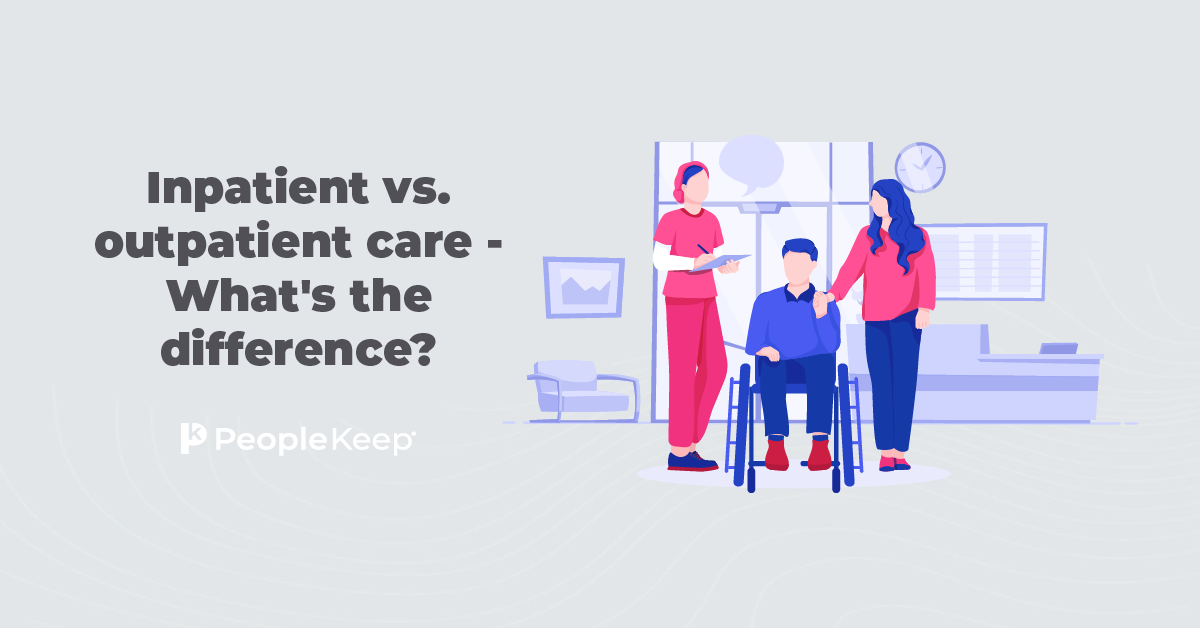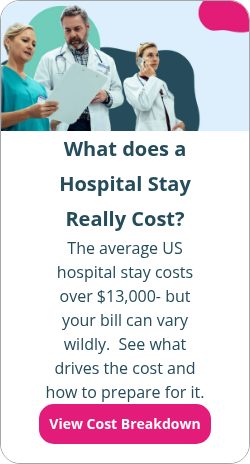What does out-of-pocket medical expense mean?
By Elizabeth Walker on October 2, 2024 at 8:00 AM
Health insurance protects you financially when you need routine care or experience a medical emergency. But while health insurance covers many services and items, you’ll still have to pay for some expenses out-of-pocket—regardless of your insurer or plan type.
Knowing which out-of-pocket medical expenses you may encounter can help you choose the right coverage for you and your family. It can also help you better budget for your healthcare costs throughout the plan year to avoid unexpected bills.
In this blog, we’ll go over everything you need to know about out-of-pocket medical costs, including how a health reimbursement arrangement (HRA) can help you pay for some of these expenses.
In this blog post, you’ll learn:
- What out-of-pocket medical expenses are, including common healthcare costs.
- How HRAs can help employees cover out-of-pocket medical expenses.
- The significance of reviewing health insurance plan details to avoid unexpected medical bills.
What does out-of-pocket medical expense mean?
An out-of-pocket medical expense is the amount a policyholder pays for a service or item their health insurance plan doesn’t cover. In many cases, these expenses will count toward your plan’s out-of-pocket maximum.
If you have a medical bill that includes an out-of-pocket expense, you’ll be responsible for paying the cost on your own. Depending on your plan and the care you receive, you could pay between 10% and 100% of the total cost of the item or service.
Below are some common items that could incur out-of-pocket payments:
- Prescription drugs
- Dental care and vision care
- Occupational and physical therapy
- Mental health counseling
- Over-the-counter medicine
- Fertility treatment
- Doctor and specialist visits
- Acupuncture
- Hospitalization
- Out-of-network care
Even though you pay for your monthly health insurance premium on your own, your insurer doesn’t consider that payment an out-of-pocket cost. You must pay your premium to maintain active coverage, regardless of whether you access medical care. Your premium also doesn’t count toward your out-of-pocket limit.
Similarly, if you receive medical care for non-covered services, you’ll have to pay the full cost out-of-pocket, and the amount will not count toward your maximum limit.
What are the different types of out-of-pocket medical expenses in health insurance?
In addition to the above expenses, there are a few medical costs that essentially every health insurance policyholder will encounter: deductibles, coinsurance, and copayments. Below, we’ll review these out-of-pocket costs and how insurance companies calculate them.
Deductibles
A deductible is the amount of money you must pay out-of-pocket before your insurance company will start to cover your medical costs. Until you reach your deductible, you’re responsible for paying a certain amount of your healthcare expenses without the help of your insurer.
Your health plan will outline your annual deductible. The amount will vary depending on your coverage’s metallic tier, health insurance company, and plan type. For example, the minimum annual deductible for a high deductible health plan (HDHP) in 2025 is $1,650 for individual coverage and $3,300 for family coverage1.
Once you meet your deductible, your insurer will pay for a portion of covered medical services for the rest of the plan year. However, the Affordable Care Act (ACA) requires all health plans on the public exchange to cover 100% of certain preventive services even if you haven’t met your deductible.
These preventive services include:
- HIV screenings
- Blood pressure testing
- Cancer screenings
- Depression screenings
- Diabetes and obesity testing
- Prenatal exams
- Drug and tobacco counseling
Coinsurance
Coinsurance is the percentage of costs you must pay for covered care after you meet your deductible. Your insurer tracks how much you’ve paid toward your deductible throughout the plan year. They’ll send you an explanation of benefits (EOB) after you receive medical care to let you know how much you’ve paid so far.
If you’ve already met your deductible, your EOB will show how much coinsurance you owe. Coinsurance rates are a fixed ratio. So, you’ll pay the same percentage on a covered health expense every time.
Coinsurance rates vary by policy and metal tier. So check your plan documents for your specific rate.
Below is an example of how to calculate your coinsurance fee for an emergency room visit:
|
Your plan’s coinsurance ratio |
Cost of an emergency room visit |
The amount your health insurer will pay |
The amount you must pay |
|
70/30 |
$300 |
70% (or $210) |
30% (or $90) |
Many insurers don’t cover out-of-network care, except if you have a medical emergency. If your insurance company covers out-of-network care, they’ll likely charge a higher coinsurance rate for it. So, getting in-network care is best if you want to estimate your out-of-pocket costs better.
Copayments
A copay is a fixed amount of money you must pay for a covered service at the time of purchase. Both individual health plans and group health insurance policies can both have copays.
Several factors can affect how much your copay might be for a particular service or item, such as your chosen health plan, provider network, type of medical care, and more. But ultimately, your insurer predetermines your copay amount for services and items. Even if you’ve met your deductible, your plan may still charge you a flat copay for certain medical care.
Here is an example breakdown of copay costs for a health insurance plan:
|
Regular doctor visit |
Specialist care visit |
Generic prescription drugs |
|
$30 |
$60 |
$15 |
You’ll pay your copay directly to your doctor, pharmacy, or hospital. Some plans require you to pay at the time of the service, while others allow the provider to bill you later.
How do these expenses affect your out-of-pocket maximum?
An out-of-pocket maximum is the most you'll pay for covered services during a plan year. While this varies by plan, the Health Insurance Marketplace places a cap on out-of-pocket limits. Your insurer can’t set a higher limit than this amount for plans on the Marketplace.
Below are the maximum out-of-pocket limits for coverage on the Health Insurance Marketplace in 20252:
|
Individual coverage |
Family coverage |
|
$9,200 |
$18,400 |
Your out-of-pocket maximum typically includes deductibles and coinsurance. Copays may count toward your deductible, but frequently, they don’t. Check your plan details to determine if your copays are exempt or eligible to go toward your maximum limit.
Your plan’s out-of-pocket maximum also won’t include your monthly premiums, out-of-network care, or non-covered services.
Once you've met your out-of-pocket maximum, your insurance will pay 100% of the cost for covered in-network healthcare services for the rest of your plan year.
How can an HRA help you cover your out-of-pocket medical expenses?
Knowing your monthly premium, copay amounts, coinsurance rate, annual deductible, and out-of-pocket maximum is a great first step in budgeting for healthcare. But it’s truly impossible to know exactly how much medical care you’ll need and how much you’ll pay out-of-pocket each year. That’s why having a health benefit that can help you pay for for your out-of-pocket medical costs is beneficial.
An HRA can help you with this. This formal employer-sponsored health benefit allows employees to receive tax-free reimbursements for qualified out-of-pocket medical costs, like prescription drugs, surgeries, physical therapy, and more. Depending on the HRA, your individual health plan premiums may also be eligible expenses. IRS Publication 5023 and the CARES Act4 outline the full list of eligible expenses.
A major perk about HRAs is that they’re easy to understand. Your employer gives you a monthly allowance to spend on healthcare. By law, only employers can contribute to an HRA, so you’re not responsible for maintaining or funding it.
Once you buy an eligible expense, you submit proof of purchase for the service or item. Documentation is usually in the form of a receipt, invoice, or EOB. Then, your employer reimburses you tax-free up to your allowance amount.
Depending on the type of out-of-pocket expense, you’ll have to submit one of the following types of documentation:
- Proof of an incurred expense
- Proof of an incurred expense and a doctor’s note
- Proof of an incurred expense and a prescription
If your employer manages their HRA through PeopleKeep, your HRA unused funds won’t roll over annually. However, funds will accumulate by rolling over monthly. Lastly, any unused HRA allowance stays with your employer if you leave their company.
The following are three types of HRAs that your employer can offer with PeopleKeep:
|
The qualified small employer HRA (QSEHRA) |
The individual coverage HRA (ICHRA) |
The group coverage HRA (GCHRA) |
|
A QSEHRA is for companies with fewer than 50 full-time equivalent employees (FTEs) that don’t offer a group plan. Full-time W-2 employees are automatically eligible to take part in the benefit. But, you must have a health plan that provides minimum essential coverage (MEC) to participate. |
An ICHRA is for businesses of any size. Like the QSEHRA, the ICHRA doesn’t work with group health insurance. But, employers can offer an ICHRA and a group plan to separate employee classes. You can opt in or out of an ICHRA based on affordability. But if you opt in, you must have a qualifying form of individual health coverage to participate. |
The GCHRA supplements a group health plan. Only employees enrolled in their employer’s group plan can participate. The GCHRA reimburses you for out-of-pocket costs your group plan doesn’t fully cover, like deductibles, coinsurance, and copays. But, premiums are ineligible expenses. |
Using an HRA, you have better control over your out-of-pocket costs and more flexibility and authority over your finances.
Conclusion
Even with a top-tier medical plan, it’s unlikely you’ll be able to avoid paying any out-of-pocket healthcare expenses. While your plan will outline your premium, annual deductible, coinsurance, and any copays, it can be challenging to know how much medical care you’ll end up needing throughout the year. To avoid surprise bills, it’s vital to understand your policy details to keep your out-of-pocket costs as low as possible.
Check out more resources
See these related articles

What is an annual out-of-pocket maximum?
Learn what an annual out-of-pocket maximum is, how it limits your healthcare costs, and what expenses count toward this insurance cap.

Inpatient vs. outpatient care - What's the difference?
Curious about the difference between inpatient and outpatient care? We break down the key distinctions to help you make informed healthcare decisions.

What can an HRA reimburse?
Wondering if your HRA can cover specific medical costs? Discover the comprehensive list of eligible expenses that your HRA can reimburse in this article.



